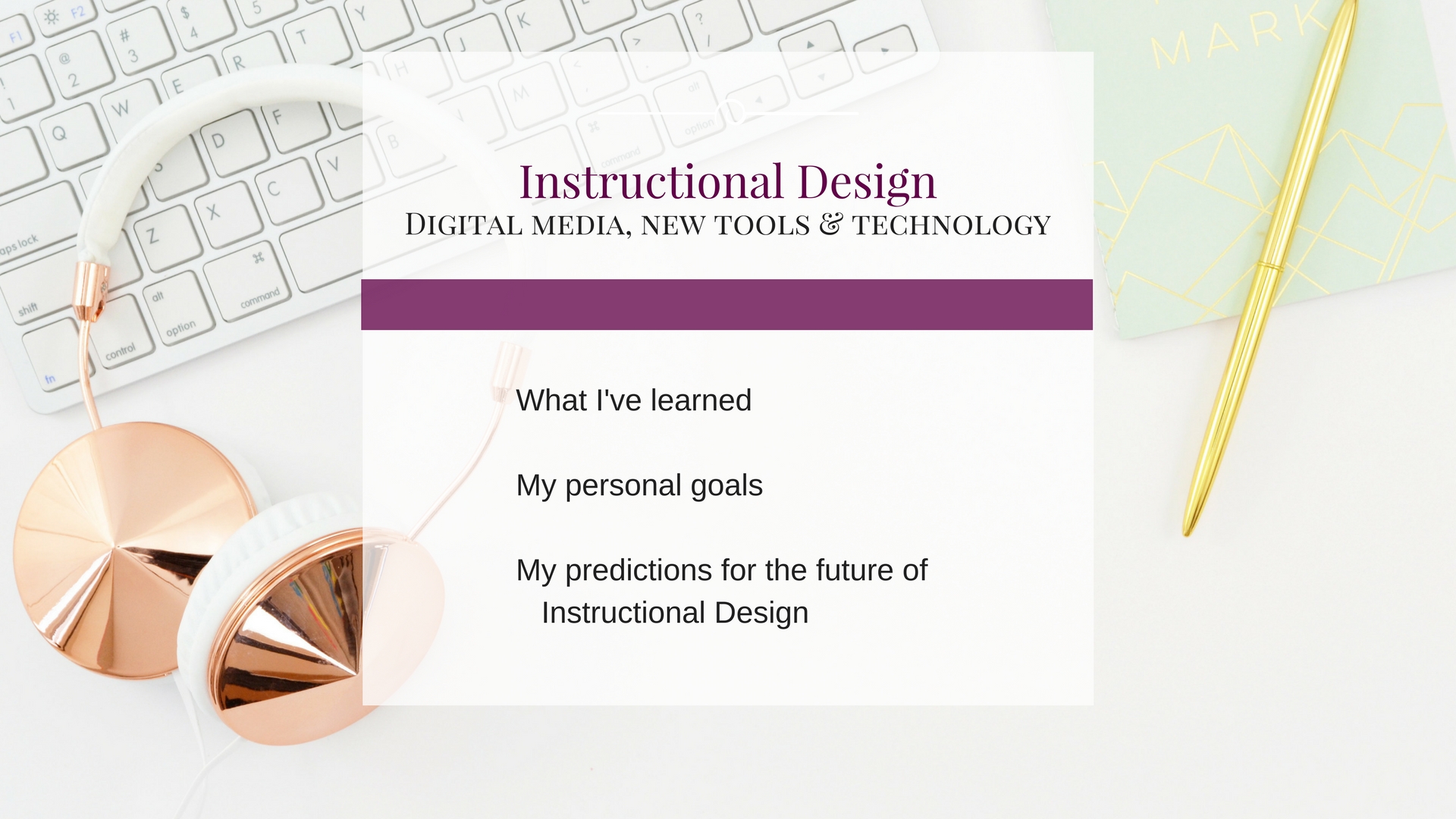Throughout the course of my career I have learned, in great detail, about the following learning theories:
- Behaviorism
- Constructivism
- Connectivism
- Cognitivism
- Andragogy (Adult Learning Theory)
Since I create course curriculum and facilitate classes for both children and adults, I definitely see these theories and approaches fitting into the courses I design. I also have a stronger idea of how to use learning theories and complex assessments in future Instructional Design and Development projects.
I wouldn’t say there is one theory that is most “relevant” for my learners; rather, I teach in a blended learning environment that combines multiple learning theories and techniques for all learning styles. In my classes, the various learning theories and approaches work in conjunction with each other.
My courses are technical in nature–such as learning to develop video games, use Photoshop, or write JavaScript code–but there is also a creative aspect to them as well. Because digital technology is the solid background for all of my courses, there is a strong Connectivism component to my teaching. Students are even taught how to search the web for tools and resources to implement in their final projects and are encouraged to do so.
HTML coding is a type of training that can make use of Behaviorism (Keramida, M.Ed., Marisa. 2015). For instance, I can use Behaviorism to teach my participants correct coding commands and debugging, while I can use Constructivism and group work or Social Constructivism during the project planning phase for the students’ final website project (McLeod, S. A. 2012, 2016.). Not only does this give my students a taste of real-world project management and scope; it also allows them to learn from each other, collaborate creatively, and build their own skills. In true Cognitivist form, their experiences and social connections help contribute to their learning.
Although I currently teach adults and children, my background originally was in Adult Learning Theory (Andragogy). For the past ten years, I have been teaching adult learners and naturally have been applying Knowles’ 5 Assumptions and 4 Principles to my classes (Pappas, C. 2017). Because adult learners bring their own prior knowledge and diverse past experiences into the classroom, I always start off by explaining the reasons why we are learning each topic and providing task-oriented instructions. My online courses are particularly self-directed and autonomous, while also offering a Connectivist approach and providing guidance and support via digital tools such as email or private Facebook groups. I feel that this works well for bringing interactive learning into the 21st Century “digital age”.
Sources:
Pappas, C. (2017, July 20). The Adult Learning Theory – Andragogy – of Malcolm Knowles.
Retrieved from https://elearningindustry.com/the-adult-learning-theory-andragogy-of-malcolm-knowles)
“The Adult Learning Theory – Andragogy – Infographic”. (April 2, 2014). Retrieved from: https://elearningindustry.com/adult-learning-theory-andragogy-infographic/
Keramida, M.Ed., Marisa. (2015, May 28). Behaviorism in Instructional Design for eLearning: When and How to Use.
Retrieved from https://elearningindustry.com/behaviorism-in-instructional-design-for-elearning-when-and-how-to-use
McLeod, S. A. (2012). Zone of Proximal Development.
Retrieved from http://www.simplypsychology.org/Zone-of-Proximal-Development.html
MacLeod, Saul. (2016). Bandura – Social Learning Theory.
Retrieved from https://www.simplypsychology.org/bandura.html
